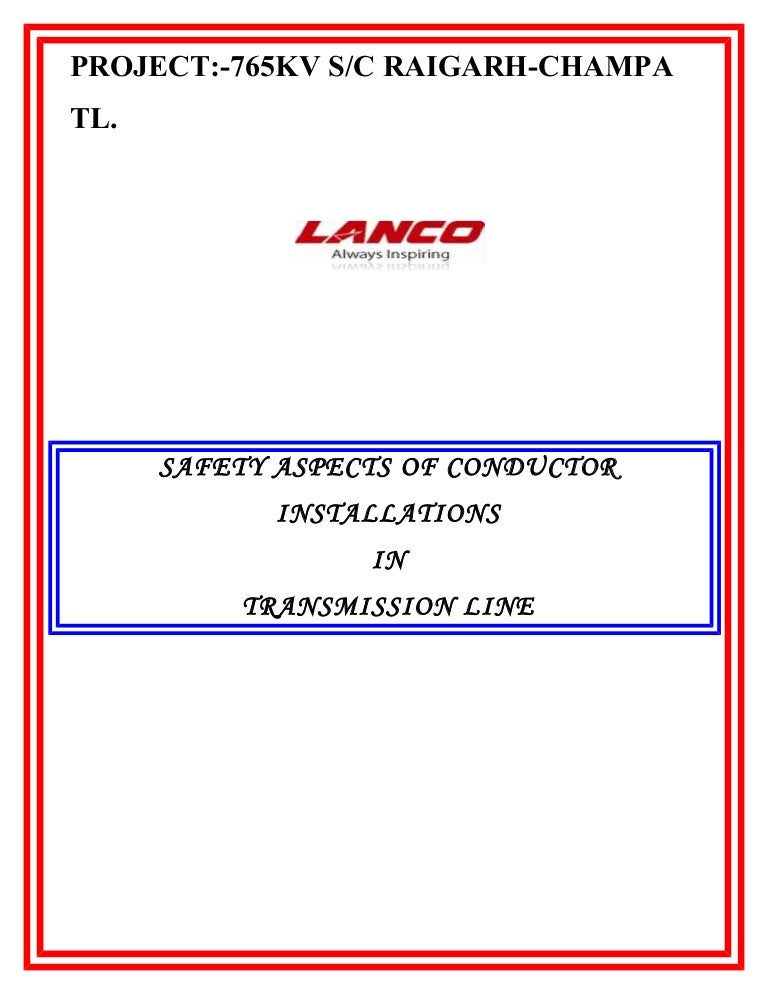Transmission Line Stringing Work And Safety Guide

Oct 16, 2014 - Paragraph 1910.269(q) has always been the guide for stringing and worker. IEEE Guide to the Installation of Overhead Transmission Line Conductors,”. A worker on the tensioner body is at risk from the conductor being. A noted author, trainer and lecturer, he is director of safety for Atkinson Power. Construction Manual for Transmission lines. (at approximately 50% working tension) on the tower on which final sagging is to be done. Adequate safety.
Get a Free Digital Signage Demo A Free 10 Minute Online Demo of the Marlin Electronic Communication Station ™ Find out just how simple and effective digital signage can be for your workplace communications. Tell us what you want to do, and we’ll customize your demo on the fly.
Experience the simple user interface. See how easy it is to post documents. View industry specific content created by Marlin. Learn how to manage users and content with ease. Learn about enterprise networking tools. Get ideas for your digital signage network. See digital signage in action with a dynamic mix of content.
Transmission Line Stringing Equipment
Right-of-Way Clearing Initially, the right-of-way is cleared of trees and brush to provide the necessary access for construction equipment and a safe work area for crews. Clearing the right-of-way ensures an environment that safely and reliably supports the construction and ongoing operation of the transmission lines. No herbicides are used for clearing during construction. Although the right-of-way will appear very different after clearing, brush grows back quickly.
To meet electric industry vegetation clearance standards, non-compatible species of trees must be permanently removed. These are trees that could become tall enough to grow or fall into the high voltage transmission lines. You can about how WMECo manages vegetation on its rights-of-way. Work Area Preparation Construction vehicles must be able to access the location of each structure that will support the transmission lines.


Gravel roads approximately 15-20 feet wide are needed for the large equipment used during construction. Large level work areas (generally 100 feet by 100 feet), called crane pads, are needed to stabilize equipment, such as drill rigs and cranes. Timber mats may be used in or around wetlands to protect these environmentally sensitive areas. Silt fencing and other environmental controls are also used to stabilize the soil and protect wetlands during construction. With the consent of property owners, gates are placed across new access roads where these intersect with town or state roads.
These gates help deter unauthorized access to the right-of-way. By landowner request, gates are also installed where access roads cross agricultural land containing livestock. Access road/work area development averages two to three days on each property. Distribution Line Relocation Distribution lines are the lower-voltage power lines that bring electricity to customers' homes. Sometimes these lines are on transmission rights-of-way. During construction, WMECo carefully coordinates the removal of existing lines with the installation of new lines. Where relocations are required, new distribution poles and wires are first installed in an alternate section of the right-of-way.
Once complete, the existing distribution line is de-energized so that power can be transferred to the newly built line. The de-energized lines are then removed so that transmission line construction can continue.
The old poles are taken to an off-site location and disposed of properly. Structure Foundation Installation The next step in the construction process is drilling foundations for the new transmission structures. This involves drilling large holes, which are then typically filled with concrete for the steel structure foundation. Drilling operations occur for a few days at each new structure location using rigs such as that pictured.
Once drilling is complete, a steel rebar cage is placed in each hole and concrete is poured to create a secure foundation for the new steel structure. Concrete trucks are used to deliver the concrete mix for the foundations.
Some structures (such as wood pole or H-frames structures) can be placed on a direct-buried foundation where the hole is filled with processed rock, rather than concrete. New Structure Installation Once the foundation is cured, transmission structure installation can begin.
The new steel poles often come in sections that are assembled on or near the foundation. Cranes and/or bucket trucks are used to lift the poles and set them into position on the foundations. The structure components are delivered to the right-of-way well in advance of this installation process. Generally, it takes one to three days to assemble and erect each new structure. After installation, the structure is grounded. Wire Stringing With the new steel structures in place, the next step is to install the wire ('conductor'). The wire-stringing operation requires equipment at each end of the section being strung.
Transmission Stringing Blocks
Wire is pulled between these 'pulling sites' through stringing blocks (pulleys) at each structure. These pulling sites are set up at various intervals along the right-of-way, typically one to three miles apart. Specific pulling sites are determined close to the time the stringing activity takes place. WMECo notifies property owners about the sites chosen at that time.
Once the wire is strung, the stringing blocks are removed and the wire clipped into its final hardware attachment. Helicopters may be used during wire stringing operations. To learn more about stringing wire by helicopter,. Restoration When construction is complete, disturbed areas will be restored.
Stringing Blocks For Line Work
Native shrubs and ground cover are allowed to regrow. Environmental controls are removed, though some may remain until the area is stabilized. In areas that were previously landscaped, WMECo works with property owners to restore the area to its pre-construction condition.
Before construction is complete, a project representative will visit affected property owners to develop property-specific restoration plans. These plans will require the final approval of both the property owner and WMECo.